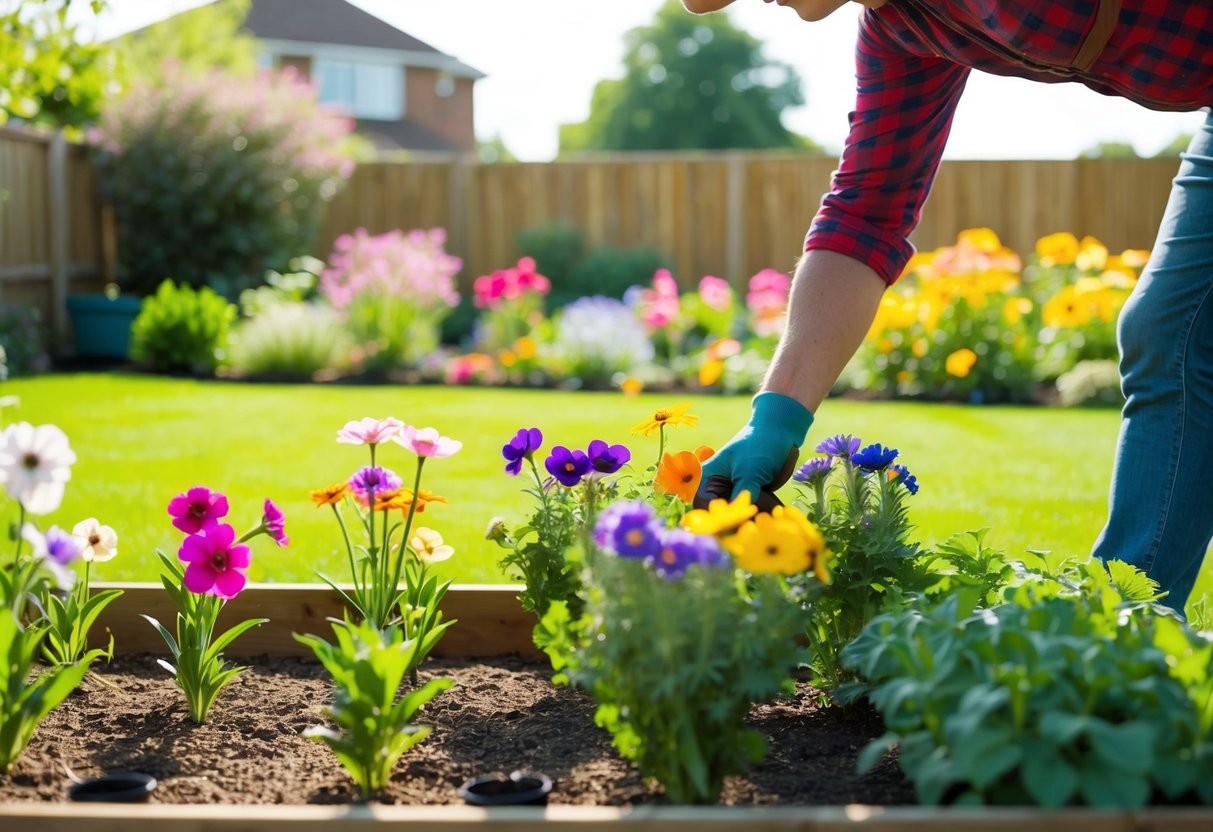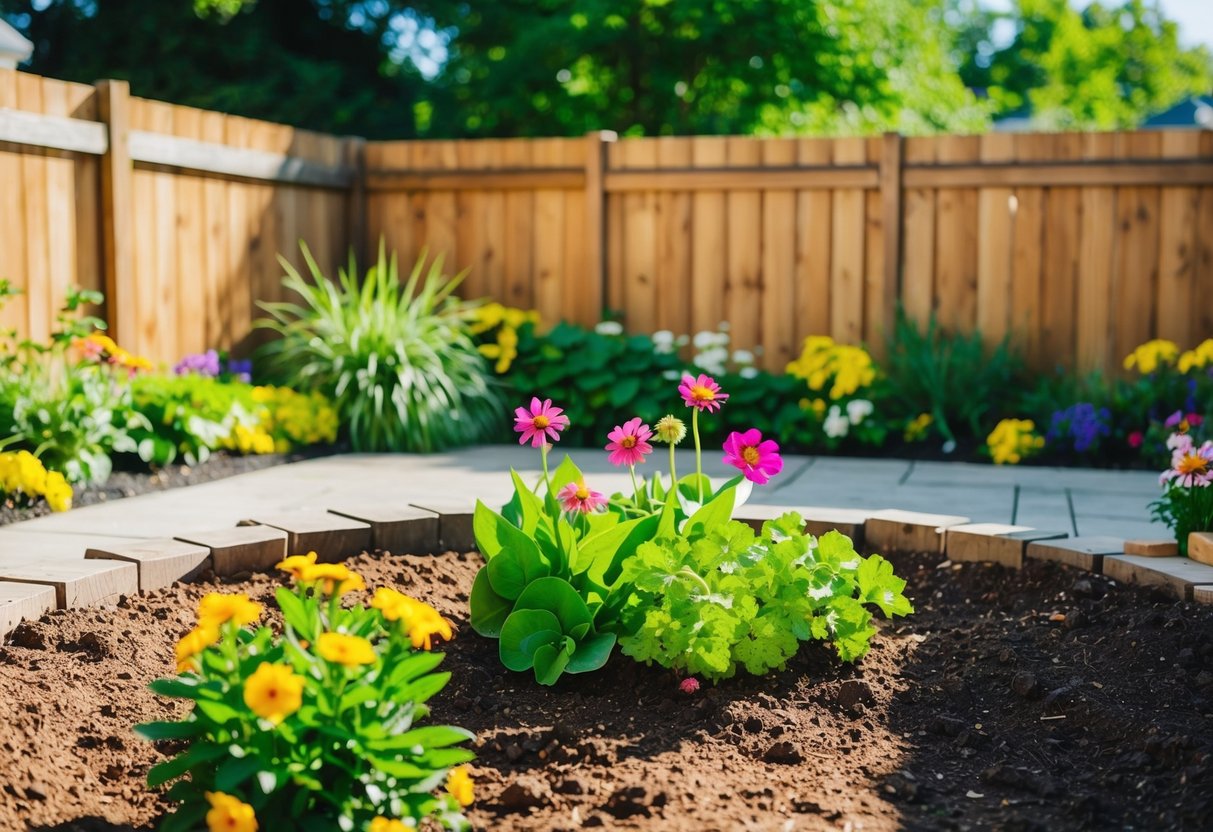Where is the Best Place to Plant a Flower Garden? Tips for Optimal Growth
When you start planning your flower garden, think carefully about its location. The best place to plant a flower garden is in an area that gets plenty of sunlight and has good drainage. Sunlight helps your flowers grow strong, and proper drainage ensures they aren’t sitting in too much water, which could harm them.

Consider your backyard or any open space around your home. Look for spots that get at least six hours of sunlight a day. If full sun isn’t possible, there are many partial-sun plants that can still thrive. It’s also helpful to choose a place where you can admire your garden from your windows or outdoor seating areas.
Exploring different flower garden ideas can inspire you when deciding where to plant. Whether you prefer a small, cozy corner or a sprawling area full of blooms, choosing the right location is the first step towards creating beautiful flower gardens that enhance your home’s landscape. For tips on location and other gardening advice, check out this guide on starting a flower garden.
Choosing the Right Location

Picking the right spot for your flower garden can make all the difference. Consider how much sun the space gets and how well you can work with your area’s climate. Also, think about how the garden will look from the street for maximum impact.
Assessing Sun Exposure
Sun exposure is very important for the success of your flower garden. Most flowers need 8 or more hours of sunlight each day to thrive. Start by observing the area throughout the day to see where the sun shines the most. Look for trees, buildings, and other objects casting shadows that might affect sun exposure.
Some plants, like leafy greens, can grow well with just 4-6 hours of sunlight. Root vegetables need about 6-8 hours. For most flowering plants, try to pick a location that receives plenty of direct sun. Using this information, you can decide which types of flowers will do best where you’re planning your garden. Choosing the right plants will ensure your garden is healthy and vibrant.
Understanding Hardiness Zones
Your hardiness zone is another key factor in gardening. This zone determines which plants will survive in your area based on the average coldest temperatures. You can find your zone using an online map or tool. Knowing your zone helps you select flowers that can withstand your climate without extra effort.
Pick flowers labeled for your zone to avoid planting species that can’t handle the local weather. This way, they can grow strong and stay healthy with minimal intervention. By sticking to your zone, you’ll enjoy a robust garden that requires less maintenance and resources.
Maximizing Curb Appeal
How your garden looks from the road is important for both enjoyment and property value. Consider where your garden is in relation to your house and pathways. Placing it near an entrance can make a welcoming statement. Choose flowers with vibrant colors and varied heights for visual interest.
Plant taller flowers towards the back and shorter ones in front. A well-planned layout adds depth and dimension, enhancing the appearance. A beautiful garden can draw attention and create a positive impression. With careful planning, your garden can be an eye-catching feature for your home.
Preparing the Soil

Creating a healthy foundation is vital for a successful flower garden. The soil needs to be enriched with compost, nutrients, and organic matter to support vibrant blooms.
Enriching the Soil with Compost
Compost is a gardener’s best friend. It improves soil structure by adding essential nutrients and increasing organic matter. To start, you can make your own compost by using kitchen scraps like fruit peels and vegetable waste.
Make sure to mix this compost into the soil at a depth of about six inches. This will not only enrich the soil but also improve drainage and aeration. If making your own compost is not feasible, consider purchasing it from a local garden center. Using compost will help in creating a healthy soil environment for your plants.
Add the compost to your soil a few weeks before planting. This allows the nutrients to blend well into the soil. Mixing the compost thoroughly ensures that your flowers get an even distribution of nutrients.
Balancing Nutrients and pH Levels
Plants need a balanced supply of nutrients to grow well. Before planting, test the soil to evaluate nutrient levels and pH balance. Most garden centers offer pH testing kits that are simple to use. The ideal pH range for most flowers falls between 6.0 and 7.0.
Adjust pH levels if necessary, by using limestone to raise the pH, or sulfur to lower it as needed. These adjustments will help the plants better absorb nutrients. Consider adding fertilizers rich in phosphorus and potassium, as these are crucial for flower development.
For a nutrient boost, add aged manure, which supplies several essential elements to your garden. This helps in maintaining a nutrient-rich environment, making your garden soil ready for your flowers.
Organic Matter Integration
Organic matter is crucial for maintaining a living, healthy soil structure. You can incorporate organic matter like leaves, grass clippings, or straw into the soil. Use a garden fork to mix these materials deeply.
This process allows the soil to retain moisture while improving its texture. An added benefit is that organic matter can keep weeds at bay, reducing competition for nutrients.
Over time, the organic material breaks down and releases nutrients into the soil, supporting the continuous growth of your plants. This sustainable practice not only benefits your flower garden but also contributes to a cleaner environment.
Selecting Your Plants

When planning a flower garden, think about choosing between annuals and perennials, adding flowering shrubs and ornamental grasses, and attracting pollinators with native flowers. Each choice influences the garden’s look, longevity, and eco-friendliness.
Choosing Between Annuals and Perennials
Annuals are plants that last for one season and are known for their bright colors and varied shapes. They add life to flower beds quickly but need replanting every year. Think about planting marigolds and petunias, as they bloom all season long.
Perennials come back year after year. They might not have the flashiest blooms, but they offer structure and long-term beauty. Hostas and daylilies are great choices. Consider mixing both for a garden that’s colorful and sustainable.
Incorporating Flowering Shrubs and Ornamental Grasses
Flowering shrubs, like hydrangeas and azaleas, provide height and a focal point in your garden. They can fill a space and offer lush blooms at different times of the year. They’re ideal for creating a backdrop.
Ornamental grasses add texture and movement. Varieties such as feather grass or fountain grass can sway gracefully in the wind. They need little maintenance and can serve as an excellent contrast to colorful flowering plants.
Attracting Pollinators with Native Flowers
Native flowers are essential in creating a pollinator-friendly garden. Butterflies and hummingbirds are particularly attracted to these plants, which are suited to your local climate and soil, reducing the need for extra care.
Choose flowers like coneflowers or bee balm that naturally draw in these helpful creatures. Not only do they bring beauty, but they also support your garden’s health by promoting pollination. Having a mix of native flowers guarantees that your garden buzzes with life and vibrancy.
Planting and Maintenance

When looking after your flower garden, it’s essential to use the right planting techniques, regular watering and fertilizing, and effective weed and pest management. Paying attention to these areas will help your flowers grow healthy and strong.
Planting Techniques
Planting is an exciting step for any gardener. Before you begin, gather your gardening tools such as a shovel, trowel, and gloves. Start by selecting the right flowers for your location. Native plants tend to thrive as they are well-adapted to local conditions.
When planting flowers, dig a hole that is twice the width of the root ball but not deeper than the plant was in its pot. Remove the plant from its container and gently tease out tangled roots before placing it in the hole. Fill the hole with soil and lightly press down to remove air pockets. Water the plant right after planting to help it settle in.
Watering and Fertilizing
Understanding your plants’ water requirements is crucial for their growth. Young plants need regular watering to establish roots. A watering can or garden hose with a gentle spray is ideal for this. Water deeply at the base and avoid wetting foliage to prevent diseases.
As for fertilize application, use a slow-release fertilizer or compost at the start of the growing season. This supports healthy growth. Be cautious not to over-fertilize, as this can burn plants. Fertilizing every few weeks might be suitable, but always follow the instructions on your fertilizer package.
Managing Weeds and Pests
Keeping your garden free from weeds and pests ensures flourishing plants. Weeds compete for nutrients, water, and light, so pull them out regularly. Consider laying down a layer of mulch to suppress weed growth and maintain soil moisture.
For pests, inspect plants frequently. Look for signs of damage, and if you spot any, act quickly. You can hand-pick pests or use natural sprays like neem oil. Deadheading, or removing spent blooms, can also help reduce pests and encourages more blooms.
By focusing on these key aspects, your flower garden will thrive, bringing beauty and joy to your outdoor space.
Designing Your Garden

Creating a beautiful garden involves choosing the right colors, arranging plants for visual appeal, and incorporating fragrance and texture. Focusing on these aspects ensures your garden is both vibrant and interesting throughout the growing season.
Creating a Colorful Palette
When designing your garden, color combinations can make a big impact. Use a color wheel as your guide. Colors next to each other, like purple and red, create a harmonious look. For a bolder effect, choose contrasting colors like purple and yellow. Plan your garden with plants that bloom at different times to maintain color throughout spring and beyond. Repetition of similar colors in different areas creates unity, while varied colors add depth and excitement.
Structuring for Visual Interest
A structured garden helps highlight features like a focal point. Begin by placing taller plants at the back with shorter ones at the front. This not only creates layers but also ensures all plants are visible. Introducing different plant shapes, like tall grasses or rounded shrubs, adds variety. Consider the bloom time to have visual interest across seasons. Paths or borders made of stones or bricks can enhance structure and guide visitors through your garden.
Adding Fragrance and Texture
Fragrance brings another sensory layer to your garden. Choose flowers known for their sweet scents, like roses or lavender. Texture adds a tactile element. Mix plants with soft, fuzzy leaves with others that have glossy or spiky foliage. This variety invites you to explore every inch of your garden. Think about plant fragrance and texture together as they can make your outdoor space feel more inviting and rich in natural elements.







